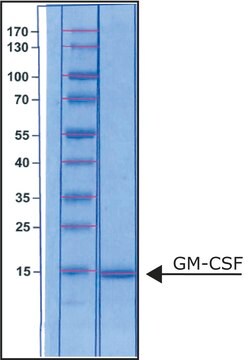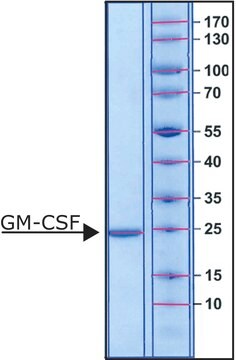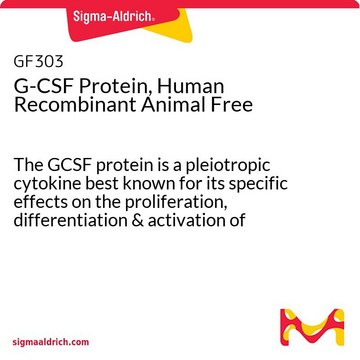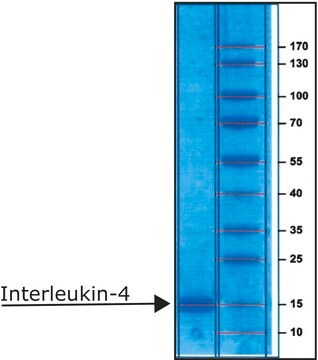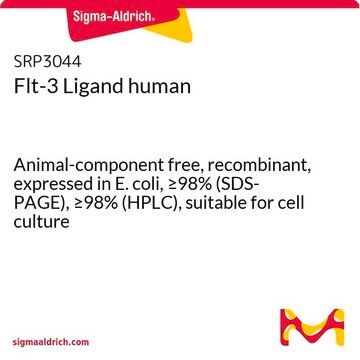G8160
Granulocyte Colony-Stimulating Factor from mouse
>97% (SDS-PAGE), recombinant, expressed in E. coli, lyophilized powder, suitable for cell culture
Sinônimo(s):
G-CSF
About This Item
Produtos recomendados
Nome do produto
Granulocyte Colony-Stimulating Factor from mouse, G-CSF, recombinant, expressed in E. coli, suitable for cell culture
fonte biológica
mouse
Nível de qualidade
recombinante
expressed in E. coli
Ensaio
>97% (SDS-PAGE)
Formulário
lyophilized powder
potência
10-60 pg/mL ED50
qualidade
endotoxin tested
peso molecular
19 kDa (179 amino acids including N-terminal methionine)
embalagem
pkg of 5 and 25 μg
condição de armazenamento
avoid repeated freeze/thaw cycles
técnica(s)
cell culture | mammalian: suitable
Impurezas
≤0.01 EU/μg
nº de adesão UniProt
temperatura de armazenamento
−20°C
Informações sobre genes
mouse ... Csf3(12985) , Csf3r(12986)
Descrição geral
Aplicação
Ações bioquímicas/fisiológicas
forma física
Nota de análise
Informações legais
produto relacionado
Palavra indicadora
Warning
Frases de perigo
Declarações de precaução
Classificações de perigo
Eye Irrit. 2 - STOT SE 3
Órgãos-alvo
Respiratory system
Código de classe de armazenamento
11 - Combustible Solids
Classe de risco de água (WGK)
WGK 3
Ponto de fulgor (°F)
Not applicable
Ponto de fulgor (°C)
Not applicable
Equipamento de proteção individual
Eyeshields, Gloves, type N95 (US)
Escolha uma das versões mais recentes:
Já possui este produto?
Encontre a documentação dos produtos que você adquiriu recentemente na biblioteca de documentos.
Nossa equipe de cientistas tem experiência em todas as áreas de pesquisa, incluindo Life Sciences, ciência de materiais, síntese química, cromatografia, química analítica e muitas outras.
Entre em contato com a assistência técnica
